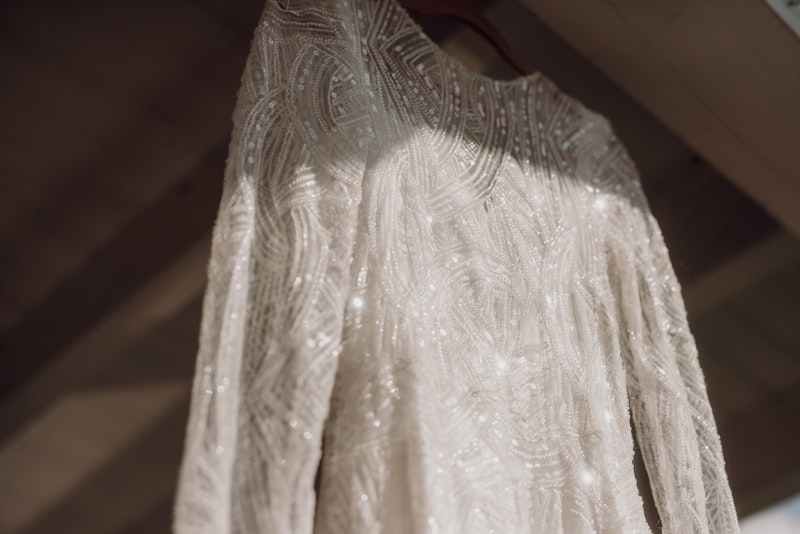The Fascinating Historical Context of White Wedding Dresses
The Fascinating Historical Context of White Wedding Dresses
Understanding the Origins and Evolution of the White Wedding Dress
The white wedding dress is an iconic symbol of bridal fashion, known for its elegance and association with purity. But how did this tradition come to be? In this article, we will explore the historical context of white wedding dresses, tracing their evolution from the influence of royalty to modern interpretations. We will also address common questions related to this timeless fashion choice, making it a comprehensive guide for brides-to-be and fashion enthusiasts alike.
The Origins of the White Wedding Dress
The tradition of wearing white for weddings became popular in the 19th century, particularly after the marriage of Queen Victoria to Prince Albert in 1840. Queen Victoria chose to wear a white gown made of silk satin for her wedding, defying the norm of colored dresses that were prevalent at the time. This choice not only captivated the public's attention but also set a trend that transformed weddings into grand, celebrated occasions.

Queen Victoria's Influence
Queen Victoria's white wedding dress was not just a fashion statement; it symbolized a new era in bridal attire. Prior to this, brides typically wore their best dresses, which could be of any color and material. The shift to white represented purity and innocence, aligning with societal views of marriage during the Victorian era. From that moment on, white became the predominant color for wedding dresses, influencing generations of brides.
Symbolism of White
The color white has deep-rooted connotations in many cultures. It is often associated with cleanliness, innocence, and new beginnings. In the context of weddings, the white dress signifies the bride's purity and her transition into a new life. This symbolism has maintained its significance through the years, although the meanings and perceptions surrounding it have evolved.
| Color | Symbolism | Cultural Significance |
| White | Purity, Innocence | Western Traditions |
| Red | Good Fortune, Happiness | Eastern Traditions |
| Blue | Constancy, Loyalty | Various Cultures |
The Evolution of Wedding Dress Styles
Over the years, the style of white wedding dresses has undergone significant changes. From the elaborate designs of the Victorian era to the sleek silhouettes of modern dresses, bridal fashion continues to evolve. In the early 20th century, flapper dresses brought a new wave of femininity, while the mid-century saw the introduction of fuller skirts and intricate lace details.
Notable Designers and Their Impact
In recent decades, notable designers have left their mark on white wedding dress designs. Designers such as Vera Wang and Pronovias have popularized unique cuts, incorporating elements from haute couture while remaining true to traditional bridal aesthetics. The influence of celebrities on wedding fashion cannot be overstated, as many brides look to their favorite stars for inspiration.
Contemporary Significance of White Wedding Dresses
Today, the white wedding dress serves as a blank canvas for brides to express their personal style. Some opt for classic designs, while others choose to experiment with colors, cuts, and embellishments. Although many brides still adhere to tradition, it is becoming increasingly common for women to choose dresses that resonate with their unique identities.
Cultural Variations
While the white wedding dress is synonymous with Western bridal traditions, many cultures around the world have their own symbolic colors and styles. In Chinese culture, red is favored for weddings, representing good fortune and prosperity. In India, brides often wear colorful lehengas or sarees, showcasing intricate designs and rich fabrics.
Frequently Asked Questions
As brides prepare for their special day, several questions often arise regarding the historical context of white wedding dresses:
1. Why do brides wear white dresses?
Traditionally, white dresses symbolize purity and innocence, a concept that dates back to the Victorian era. Today, they also represent timeless elegance, albeit with personal interpretations.
2. Can a bride wear a colored dress?
Absolutely! Many modern brides choose to wear dresses in colors that reflect their personalities or cultural backgrounds. The key is to select something that makes you feel beautiful and confident.
3. What materials are commonly used in wedding dresses?
Wedding dresses can be made from a variety of materials, including lace, satin, tulle, chiffon, and organza. The choice of fabric depends on the desired look, season, and climate.
Conclusion
In summary, the historical context of white wedding dresses is rich and multifaceted, spanning over a century of transformations in style, symbolism, and cultural significance. From Queen Victoria’s groundbreaking choice to the diverse options available today, the white wedding dress continues to be an integral part of bridal tradition. As you prepare for your wedding, remember that the most important aspect is not just the color of your dress, but the love and commitment it symbolizes. Whether you choose white, colored, or patterned, your dress should reflect who you are as a couple and the journey you are embarking on together. Embrace this beautiful piece of history, and let your dress tell your unique love story.
